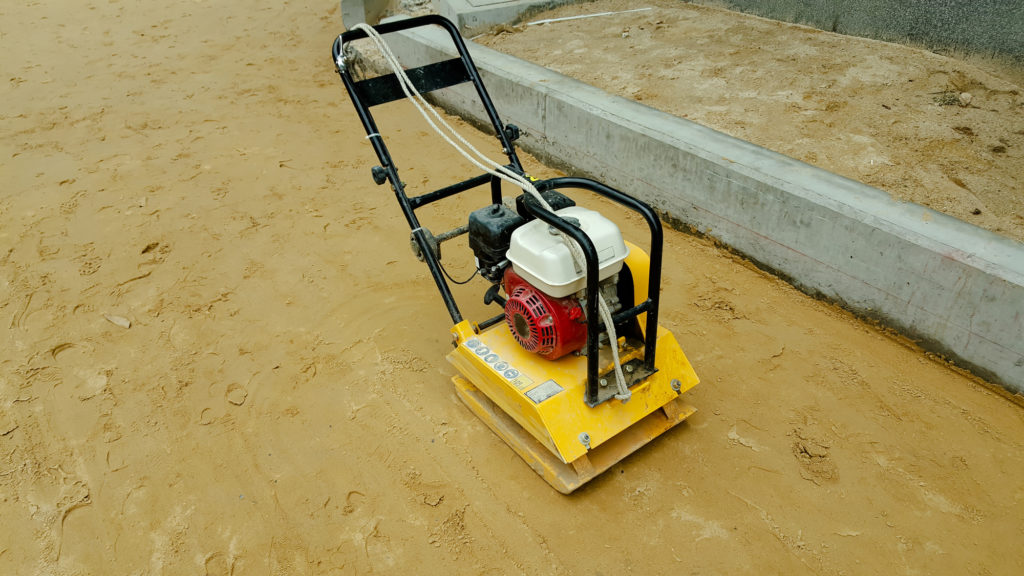
Compressing a construction site to achieve a stable subsurface requires the use of the right equipment. Pavement maintenance can also prove hard if you do not have the right machinery.
A plate compactor is ideal equipment to use for this purpose. Plate compactors also come in handy in restrained areas where a roller may not reach.
You can choose from various plate compactor models to help with gravel compression. They come in different sizes, operating mechanisms, and power capacities.
The article will serve as a guide to help you in choosing a plate compactor. Read along to learn about the multiple types, like the vibrating plate compactor.
Types of Plate Compactors
Plate compactors fall into three main categories. They include high-performance plate compactors, reversible plate compactors, and single-plate compactors. The one you choose depends on the type and size of the work at hand.
Single-plate compactors are the most popular for small asphalt jobs. Reversible plates can work both forward and reverse, and sometimes in a hover mode. The high-performance compactors are best used in areas that require deep compaction.
The size of the plates is measured in width, and they range from 15 to 35 inches. However, the width should not be the only factor to consider when buying a plate compactor. Weight and amplitude also play a role in the overall plate performance.
It is crucial to review all the specifications, all of which make up the centrifugal force. The shape of the base plate also counts. A curved plate, for example, makes turning easier. The geometry of the plate is crucial while working in tight places.
An effective plate compactor comes with a water tank. Since the asphalt is hot, water creates a barrier between it and the cold plate. The water barrier prevents the asphalt from sticking to the plate.
Under the categories of plate compactors mentioned above, there are several types you can buy.
1. Vibrating Plate Compactor
This type is ideal for the compaction of various soil types in narrow areas. They come in handy where large rollers or compaction equipment cannot effectively reach. It is suitable for use in coarse soils.
However, if you want to compact cohesive soils, a Tamper Rammer works great. It usually has a smaller plate size that allows for direct compaction.
Vibrating plate compactors are also most useful for soils that are non-cohesive. It is a powerful engine that uses the vibratory compaction to loosen up materials. It works by generating power from the single rotor to create vibration through the plate.
The size of vibratory compactors varies from one brand to the other. The weight ranges from 100kg to 2 tons. The heavier the plate, the more compaction it generates.
On the upper part of the compactor are the belt cover, power source, and water tank. The lower portion of the vibrating compactor comprises a vibrating unit and plate. The plate has an eccentric rotary shaft that supports rotation.
Characteristics of a Vibrating Plate Compactor
There are specific factors that set the vibratory compactors apart from the other types.
- It can work at temperatures between ten and fifty degrees Celsius
- The depth of compaction is between 13 and 30 cm depending on the soil
- Frequency ranges between 2500 and 6000 VPM
Remember that the size and weight of the compactor will determine the output. The small size works best in areas where turning would be impossible.
2. Hydraulic Compactor
The hydraulic type is the most outstanding in the market. Its design makes it possible to mount on other equipment as an auxiliary tool.
For example, you can climb it on backhoe machinery. It is an ideal choice for areas that other materials cannot compact.
3. Rammer Compactor
The rammer plate compactor is best used to compact foundations. It is also ideal for road curbs, footings, and road bases. It is small size equipment and also light in weight.
If you have some interior floor compaction to do, choose the rammer compactor. Other uses are pavement repairs, streets, highways, and road shoulders.
Importance of Compaction
The primary purpose of plate compactors is to provide compaction. Inadequate compaction can lead to uneven surfaces that can be a source of safety hazards. It can also increase costs by necessitating maintenance and repair sooner and often.
Compaction projects begin by excavation of 8 to 12 inches depending on the final project’s purpose.
Some contractors disregard the importance of proper compacting because of the purpose. Some of the problems that arise from improper compacting include shifting and compression. Both the sub-base and pavers also suffer instability and compression.
In areas that experience extreme weather changes, the cycle causes displacement of pavers. Air gets trapped in the voids under the structures, creating spaces for water to settle. When it is cold, the water freezes and expands, causing the pavers to heave.
How It Works
Compaction begins by excavating the area for pavers. You should place the sub-base on an even and firm surface. It’s recommendable to compress the area with a plate compactor three to four times before placing the sub-base material.
In most cases, limestone or sandstone are the construction materials that are used for the sub-base. Place the sub-base material in a thickness of 4 to 8-inches, and compaction should follow with each placement. Proper compaction is achieved in three to four phases per material placement.
Keep in mind that the thickness of the material placed at each level affects compaction. More than 8 inches of width will be hard to compact. Remember to compact the surface once you have set the paves in the desired pattern.
Final Thoughts on the Vibrating Plate Compactor
You must have the right equipment if your site surface is to be adequately compacted. There are several qualities to check when buying a plate contractor. Besides the type of plate, you also must consider the power of the equipment.
Different plate compactors have varied characteristics. Plate compactors are desirable for surfaces that a large roller cannot economically compact. Three types of compactors you can choose from are the hydraulic, rammer, and vibrating plate compactor.
Buy from a reputable supplier to get a quality product. Additionally, you will get the support you need should anything go wrong during its use.
Proper compaction is crucial in both the short and the long-term. You can only achieve the best results if you know how a plate contractor works.
Are you more curious? You can continue browsing our blog for more business-related topics.


One Comment
Leave a Reply